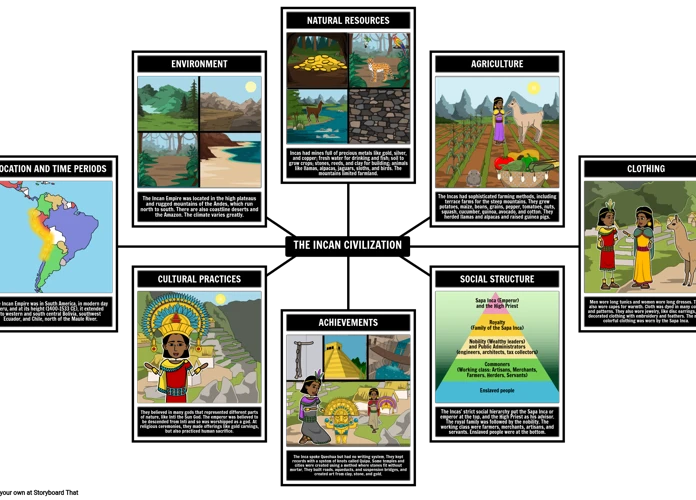The Inca Empire, one of the most fascinating civilizations in history, thrived in the Andes Mountains of South America from the 13th to the 16th century. Renowned for their impressive architectural feats, such as Machu Picchu, the Inca also established a highly intricate social hierarchy that governed their society. This hierarchy, characterized by distinct roles and responsibilities, played a crucial role in maintaining order and stability within the empire. In this article, we will delve into the fascinating world of the Inca social structure, exploring the roles of the Sapa Inca, the nobility, the commoners, the elite military force, the colonists, and the conquered people. By understanding these various layers of society, we can gain insights into the complexity and sophistication of the Inca Empire’s social fabric.
Contents
- The Sapa Inca: The Supreme Ruler
- The Nobility: Sacred Bloodlines
- The Commoners: Contributions and Obligations
- The Capac Runa: Elite Military Force
- The Mitmakuna: Colonists and Empire Expansion
- The Yanakuna: Conquered People
- Conclusion
-
Frequently Asked Questions
- 1. How did someone become the Sapa Inca?
- 2. What were the main responsibilities of the Sapa Inca?
- 3. Where did the Sapa Inca reside?
- 4. Did the Sapa Inca have advisors?
- 5. Was the authority of the Sapa Inca absolute?
- 6. How did the Inca people view the Sapa Inca?
- 7. How did the Sapa Inca ensure the cohesion of the empire?
- 8. Were the Sapa Inca exempt from their obligations to society?
- 9. How did the Inca people believe the Sapa Inca obtained their power?
- 10. What role did the Sapa Inca play in religious ceremonies?
- References
-
Frequently Asked Questions
- 1. How was the Inca Empire’s social hierarchy structured?
- 2. Who was the Sapa Inca?
- 3. What were the roles of the nobility in Inca society?
- 4. What were the contributions and obligations of the commoners?
- 5. Tell me more about the elite military force in the Inca Empire.
- 6. What role did colonists play in the Inca Empire?
- 7. What was the status of the conquered people within the Inca Empire?
- 8. How did the Inca Empire’s social hierarchy impact daily life?
- 9. Were there any exceptions to the Inca Empire’s social hierarchy?
- 10. What happened to the Inca social hierarchy after the Spanish conquest?
- References
- Read More
The Sapa Inca: The Supreme Ruler
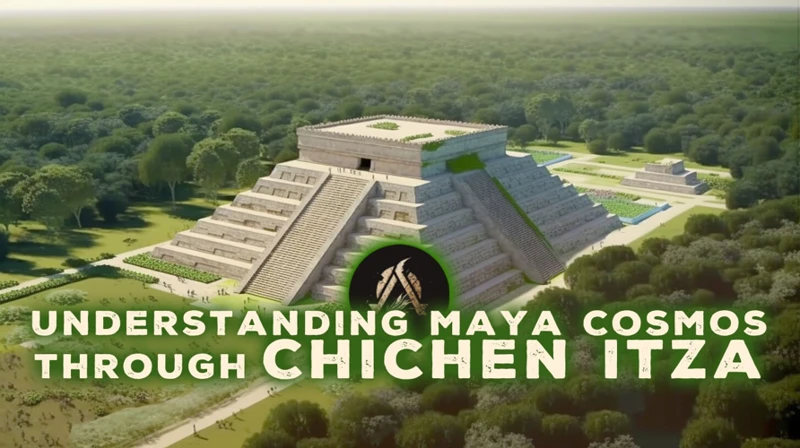
The Sapa Inca, the highest authority in the Inca Empire, held immense power and religious significance. The title of Sapa Inca was hereditary and passed down within the ruling family. This supreme ruler was believed to be the descendant of the Sun God, Inti, and held divine authority over the empire. The Sapa Inca’s main duty was to ensure the well-being and prosperity of the empire and its people. They were responsible for maintaining political stability, overseeing religious rituals, and making important decisions concerning warfare, agriculture, and trade. The Sapa Inca resided in the magnificent capital city of Cusco, which was considered the center of the world and the heart of the empire. Their palace, known as the Coricancha, was a sacred site filled with gold, representing the wealth and power of the empire. The Sapa Inca was surrounded by a court of advisors and priests, who assisted in governing the empire and performing religious ceremonies. The supreme ruler’s authority was unquestioned, and their word was law. The people of the Inca Empire revered the Sapa Inca, viewing them as a divine figure who protected and guided their society. The Sapa Inca played a pivotal role in maintaining the social order and ensuring the cohesion of the empire. Despite the power and reverence associated with their position, the Sapa Inca was not exempt from their obligations to society. They were expected to lead by example, showing humility, wisdom, and benevolence towards their subjects. The reign of the Sapa Inca was a crucial aspect of the Inca Empire’s intricate social hierarchy, as all levels of society looked to them for guidance and protection.
The Nobility: Sacred Bloodlines
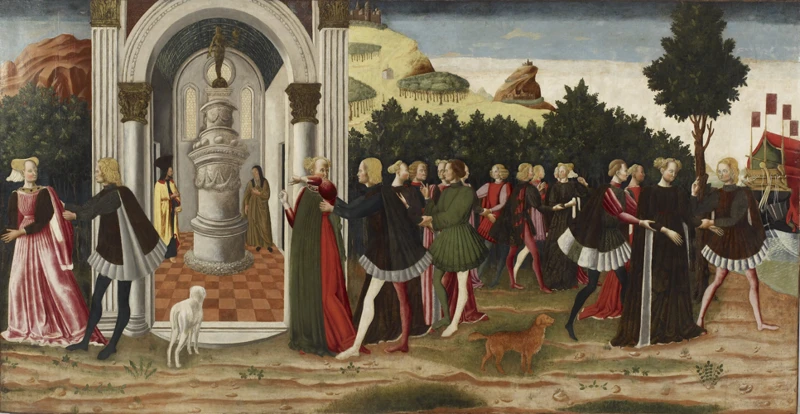
The nobility of the Inca Empire held a prestigious position in society, believed to be descendants of the gods and connected to the divine. Known as the “Apu,” these individuals were part of the elite class and enjoyed privileges and status that set them apart from the commoners. The nobility played a crucial role in governing the empire, with their authority extending over specific territorial regions. They held the positions of provincial governors, known as the “Curacas,” and were responsible for maintaining order, collecting taxes, and overseeing local affairs. The nobility’s authority was based on their sacred bloodline, tracing their lineage back to the Sapa Inca and the gods themselves. This belief in divine ancestry solidified their place in the social structure and ensured their position of power. The nobility enjoyed luxurious lifestyles, with access to the finest goods, elaborate clothing, and a retinue of servants to attend to their needs. They also played a significant role in religious ceremonies and were responsible for preserving and upholding the spiritual traditions of the empire. The nobility’s role in the Inca social hierarchy was instrumental in maintaining the cohesion and stability of the empire, as they oversaw the administration of their respective territories, ensured the loyalty of the local population, and upheld the beliefs and practices that held the empire together.
1. The Apu: Provincial Governors
The Apu, or provincial governors, held significant authority within the Inca Empire. They were appointed by the Sapa Inca and served as the rulers of individual regions or provinces. The Apus were chosen based on their loyalty, administrative capabilities, and noble lineage. Their primary responsibility was to govern their respective provinces efficiently and ensure the well-being of the people under their jurisdiction. The Apus acted as intermediaries between the local communities and the central government, relaying important information, enforcing laws, and collecting tribute on behalf of the empire. They oversaw the distribution of resources, such as land and labor, and ensured that the production of goods met the needs of both the local populace and the empire as a whole. The Apus played a crucial role in maintaining social order and justice within their provinces, resolving disputes and punishing those who broke the law. They also supervised the implementation of public projects and infrastructure development in their regions, such as road networks and irrigation systems. The Apus were supported by a bureaucracy of officials and advisors who assisted them in governing effectively. They were required to report regularly to the Sapa Inca, demonstrating their loyalty and providing updates on the affairs of their provinces. The Apus occupied an important position in the social hierarchy, as they were responsible for maintaining the stability and prosperity of their provinces, which contributed to the overall success of the Inca Empire.
2. The Curaca: Local Leaders
The Curaca were local leaders within the intricate social hierarchy of the Inca Empire. They held significant authority and were responsible for governing specific regions or provinces. The position of Curaca was often hereditary, passing down through family lines, and these leaders were chosen based on their merit and loyalty to the empire. The Curaca acted as intermediaries between the Sapa Inca and the local communities, ensuring that the empire’s laws and regulations were upheld. They were tasked with maintaining order, resolving disputes, and enforcing the empire’s policies. The Curaca were respected figures within their communities and held the role of spiritual leaders as well. They oversaw the religious ceremonies and rituals within their region, ensuring that the people remained connected to their Incan beliefs and traditions. Additionally, the Curaca played a crucial role in the administration of resources and labor. They supervised the collection of taxes, which generally consisted of tribute in the form of crops, textiles, or other goods. They also organized and directed the labor force, coordinating projects such as construction, agriculture, and road maintenance. The Curaca held a vital position in the local governance and played an instrumental role in the success and stability of the empire. Their authority and responsibilities were essential for maintaining the social fabric of the Inca Empire at the regional level.
3. The Hatun Runa: Aristocracy
The Hatun Runa, also known as the aristocracy, occupied an esteemed position in the social hierarchy of the Inca Empire. They were individuals who held immense wealth and power, often through inherited lineage or exceptional achievements in service to the empire. The Hatun Runa enjoyed privileges and benefits that set them apart from the commoners. They held high-ranking positions in the government, serving as administrators, military commanders, or even provincial governors known as Apus. This elite class had the responsibility of overseeing various aspects of governance, including taxation, justice, and military affairs. They also played a crucial role in maintaining connections between the Sapa Inca and the provincial governors. The Hatun Runa lived a luxurious lifestyle, with access to extravagant palaces, fine clothing, and abundant wealth. Their social status was often displayed through elaborate clothing and distinctive headdresses made from precious materials, such as feathers and gold. The aristocracy also had access to education and formal training, allowing them to develop skills in diplomacy, administration, and warfare. While the Hatun Runa held immense power and privilege, they were also expected to fulfill their obligations to the empire and its people. They were required to contribute to public works, such as building roads, temples, and agricultural terraces. Additionally, they were expected to participate in military campaigns and provide offerings for religious ceremonies. The aristocracy played a vital role in the Inca Empire’s intricate social structure, serving as a link between the supreme ruler, the Sapa Inca, and the rest of society. Their influence and contributions helped maintain order and stability within the empire, while also showcasing the grandeur and sophistication of Inca society.
The Commoners: Contributions and Obligations

The commoners in the Inca Empire formed the foundation of the society, playing essential roles in contributing to the prosperity and functioning of the empire. Known as the Hatun Runa, or the aristocracy, they were responsible for various tasks and obligations. One key aspect of their role was agricultural labor, as the commoners worked the lands, cultivating crops to sustain the empire. Additionally, they fulfilled their duties through the Mita system, a form of taxation where they provided labor for public infrastructure projects and the needs of the nobility. This labor was vital for the development of the empire, with commoners constructing roads, temples, and terraces. The Hatun Runa were expected to participate in military service when required, defending the empire in times of conflict. While the commoners had their obligations, they also enjoyed certain benefits such as protection and support from the empire. The Ayllu, or the extended family unit, was a fundamental social structure that provided a support system and ensured the well-being of its members. Within the Ayllu, communal responsibilities were shared, and everyone worked together to meet the needs of the community. The commoners’ contributions and obligations were crucial for the sustainability and growth of the Inca Empire, demonstrating the interconnectedness and cooperation that defined their intricate social hierarchy.
1. The Yanacona: Servants and Slaves
The Yanacona occupied the lowest position in the Inca social hierarchy, serving as servants and slaves to the upper classes. They were individuals who had been captured in warfare or born into servitude. The Yanacona were responsible for performing laborious tasks such as agricultural work, construction, and household chores. They served the nobility and the Sapa Inca, catering to their needs and ensuring the smooth functioning of the empire. Despite their position, the Yanacona were not considered disposable property but rather valuable members of society who contributed to the prosperity of the empire. They were provided with basic necessities such as food, shelter, and clothing, in return for their service. In addition to their labor, the Yanacona played important roles in religious ceremonies and rituals, assisting the priests and nobility. While they lacked personal freedom, they were granted certain rights and protections. They could accumulate personal wealth, inherit property, and even earn their freedom, known as “mitimaes,” through outstanding service or acts of bravery. The Yanacona’s status as servants and slaves was deeply entrenched within Inca society, and their presence was an integral part of the empire’s social structure and functionality. Their contributions and sacrifices played a crucial role in supporting the upper classes’ way of life and the overall success of the Inca Empire.
2. The Mita: Labor and Taxation
The Mita system played a crucial role in labor and taxation within the Inca Empire. Under this system, individuals were required to contribute their labor for the benefit of society. The Mita was a form of mandatory public service, where individuals would provide their time and skills to various communal projects. These projects included construction of infrastructure such as roads, bridges, and agricultural terraces, as well as mining and farming activities. The Mita system ensured that the empire’s needs were met, as well as serving as a method of taxation. The labor provided by the Mita was a form of tribute to the state, helping to sustain the empire’s economy and infrastructure. The Mita was organized and overseen by local leaders, who would assess the skills and abilities of individuals and assign them to appropriate tasks. The Mita workers would often rotate their service, ensuring that the burden was shared fairly among the population. It is important to note that the Mita extended beyond physical labor alone. Skilled individuals such as artisans, weavers, and healers were also required to contribute their expertise to society. The Mita system was a manifestation of the collective nature of Inca society, where everyone had a role to play in the empire’s growth and prosperity. It not only provided the necessary labor force for various projects but also ensured equality and fairness in distribution of resources. The Mita system was a fundamental aspect of the Inca Empire’s intricate social hierarchy, where labor and taxation went hand in hand to sustain the empire’s functioning.
3. The Ayllu: The Extended Family Unit
The Ayllu was a fundamental concept in the Inca Empire’s social structure, representing the extended family unit. It formed the foundation of Inca society, embodying the importance of kinship and communal living. The Ayllu consisted of multiple families who shared common ancestry. Each Ayllu was led by a Curaca, a local leader responsible for maintaining order and resolving disputes within the community. Within the Ayllu, there were clear roles and responsibilities assigned to its members. The Inca believed in collective labor and reciprocity, where each member of the Ayllu had specific obligations towards the community. For example, individuals were expected to contribute their labor for the greater benefit of the Ayllu. This collective work, known as “mita,” could involve farming, construction, or other tasks necessary for the Ayllu’s well-being. The Ayllu system also had a structure for providing support and care for its members. Elderly or disabled individuals received assistance from the community, ensuring that everyone’s needs were met. The Ayllu fostered a sense of unity, cooperation, and interdependence among its members, strengthening social bonds within the Inca Empire. It served as an essential building block in the social hierarchy, connecting the commoners to the nobility and Sapa Inca. The Ayllu’s emphasis on communal living and collective responsibility helped maintain social stability and ensure the success of the empire as a whole.
The Capac Runa: Elite Military Force
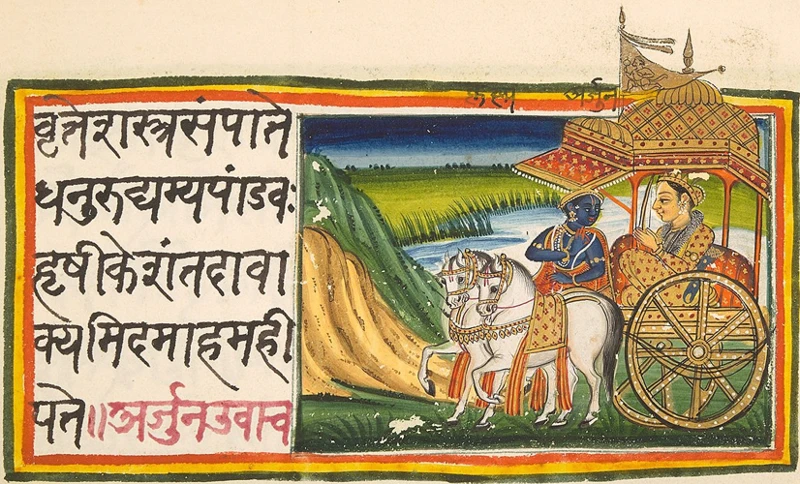
The Capac Runa, also known as the “chosen people,” formed the elite military force of the Inca Empire. These highly trained warriors were selected from a young age based on their physical prowess, intelligence, and loyalty to the empire. The selection process involved rigorous training and testing to ensure that only the most skilled individuals became part of this prestigious group. The Capac Runa were responsible for defending the empire from external threats, maintaining order within the empire, and enforcing the laws established by the Sapa Inca. They underwent extensive military training, learning various combat techniques, weaponry skills, and strategy. They were also trained in discipline, obedience, and loyalty to the empire. The Capac Runa played a crucial role in expanding the empire through conquest, as they were at the forefront of military campaigns, capturing new territories, and subjugating rival tribes. In battle, they wore distinctive uniforms and adorned themselves with intricate feathered headdresses, symbolizing their status as elite warriors. The Capac Runa were highly respected and revered within Inca society, and their accomplishments on the battlefield earned them privileges and high social status. However, they were also expected to uphold a strict code of honor, demonstrating bravery, loyalty, and self-sacrifice in service to the empire. The Capac Runa were held in such high regard that they were exempt from labor obligations and received special privileges and rewards from the Inca government. Their contributions to the empire’s military strength and expansion were paramount to the Inca Empire’s dominance and control over a vast territory. The Capac Runa were an integral part of the Inca Empire’s intricate social hierarchy, showcasing the importance of military might and the empire’s emphasis on maintaining power and order.
The Mitmakuna: Colonists and Empire Expansion
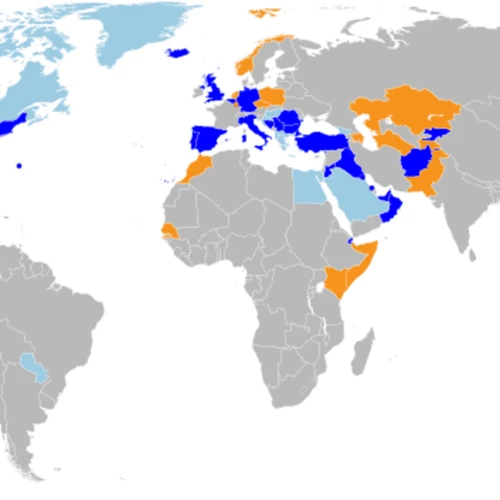
The Mitmakuna were an important group within the Inca Empire, playing a critical role in the expansion and colonization efforts of the empire. These colonists were sent by the Sapa Inca to settle in newly conquered territories, establish new communities, and foster loyalty to the Inca Empire. The process of colonization, known as the mitma system, involved selecting groups of people from various regions and relocating them to strategically significant areas. The Mitmakuna were chosen based on their skills, expertise, or potential to contribute to the development and expansion of the empire. They would bring with them their unique traditions, customs, and knowledge, which enriched the culture of the Inca Empire as a whole. The Mitmakuna were expected to maintain their own distinct identities and customs while also adopting aspects of Inca culture and paying tribute to the Sapa Inca. By strategically placing colonies throughout their vast territories, the Inca Empire ensured control over newly conquered lands, facilitated trade and communication, and expanded their influence. The Mitmakuna acted as ambassadors of the Inca Empire, spreading Inca influence and ideology to the regions they settled in. They introduced new agricultural techniques, helped establish infrastructure, and contributed to the economic growth of the empire. The Mitmakuna played a crucial role in solidifying the Inca Empire’s dominance and shaping its cultural diversity. Their presence and contributions demonstrated the advanced organizational skills and long-term planning of the Inca rulers, making them a key part of the empire’s intricate social hierarchy.
The Yanakuna: Conquered People

The Yanakuna were a significant group within the Inca Empire, representing the conquered people who were integrated into Inca society. After the Inca Empire expanded through military conquest, the conquered people, or yanakuna, were assimilated into Inca society and became part of the intricate social hierarchy. The yanakuna were assigned various roles and responsibilities within the empire, primarily as laborers and servants. They were expected to contribute to the empire by providing agricultural labor, constructing buildings and roads, and serving the needs of the ruling elite. Although they were not part of the noble class, the yanakuna played a crucial role in sustaining the empire’s infrastructure and economy.
The yanakuna were responsible for various tasks, including farming, mining, weaving, and maintaining the royal estates. They were organized into groups and worked collectively on communal lands known as suyus. These labor obligations, known as the mita system, ensured that the conquered people provided valuable resources and services to the empire.
Despite their subordinate status, the yanakuna were not without certain rights and protections. They were allowed to maintain their cultural practices and traditions, as long as they did not pose a threat to the Inca Empire. The Inca rulers recognized the value of the conquered people’s skills and knowledge, and thus, their assimilation into Inca society served to strengthen the empire both economically and culturally.
It is important to note that the yanakuna were not slaves but rather a distinct social group within the Inca social hierarchy. While their status was lower than that of the nobility or the ruling class, they still occupied a vital role in the functioning of the empire. Their contribution to the empire’s success cannot be understated, as they provided the labor and resources necessary for the growth and prosperity of the Inca Empire.
The integration of the conquered people into the Inca social structure reflects the empire’s ability to assimilate diverse cultures and maintain social cohesion. The Inca Empire’s acknowledgement and utilization of the skills and labor of the yanakuna demonstrate its effective administration and ability to sustain and expand its territory. The yanakuna’s role as the conquered people within the Inca Empire’s social hierarchy highlights the complex dynamics and intricacies of this remarkable civilization.
To learn more about the fascinating history of other ancient civilizations, such as the Oracle of Delphi, you can read our article [Unraveling the Mysterious Prophecies of the Oracle of Delphi][/unraveling-mysterious-prophecies-oracle-delphi/].
Conclusion
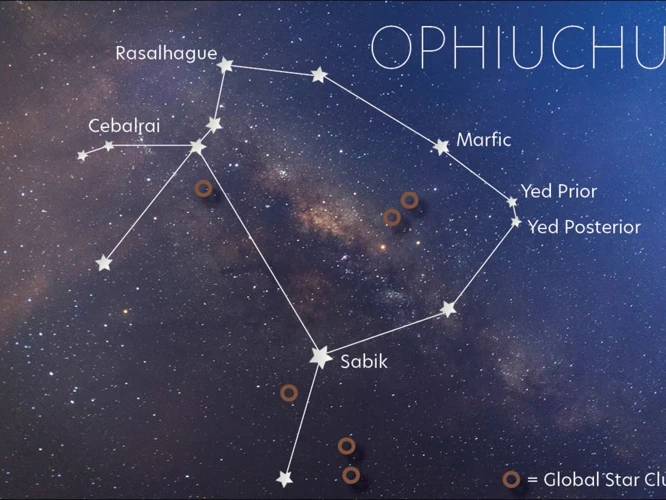
In conclusion, the social hierarchy of the Inca Empire was a complex and intricate system that played a vital role in maintaining order and stability within the society. At the top of this hierarchy was the Sapa Inca, the supreme ruler who held immense power and religious significance as the descendant of the Sun God. The nobility, consisting of provincial governors, local leaders, and aristocracy, formed the upper class of society and maintained the sacred bloodlines of the empire. The commoners, who contributed through labor and taxation, were the backbone of the empire, while the Yanacona served as servants and slaves. The extended family unit, known as the Ayllu, provided a sense of community and support. The Capac Runa, an elite military force, ensured the empire’s defense and expansion, while the Mitmakuna acted as colonists, extending the influence of the empire. Lastly, the conquered people, or Yanakuna, became part of the empire, contributing to its diversity. The Inca Empire’s social hierarchy was a carefully crafted system that promoted social cohesion and emphasized the role of each individual within the greater society. Through this intricate structure, the Inca Empire thrived and left a lasting legacy in history.
Frequently Asked Questions

1. How did someone become the Sapa Inca?
Becoming the Sapa Inca was based on a hereditary system within the ruling family. The title was passed down from one generation to another, ensuring a continuation of the divine lineage.
2. What were the main responsibilities of the Sapa Inca?
The Sapa Inca held the responsibility of maintaining political stability, overseeing religious rituals, and making important decisions concerning warfare, agriculture, and trade. They were also expected to ensure the well-being and prosperity of the empire and its people.
3. Where did the Sapa Inca reside?
The Sapa Inca resided in the capital city of Cusco, which was considered the center of the world and the heart of the empire. Their palace, the Coricancha, was a sacred site filled with gold, symbolizing the wealth and power of the empire.
4. Did the Sapa Inca have advisors?
Yes, the Sapa Inca was surrounded by a court of advisors and priests who assisted in governing the empire and performing religious ceremonies.
Yes, the authority of the Sapa Inca was absolute. Their word was considered law, and their decisions were unquestioned by the people of the Inca Empire.
6. How did the Inca people view the Sapa Inca?
The people of the Inca Empire revered the Sapa Inca, viewing them as a divine figure who protected and guided their society. They held the Sapa Inca in high regard and looked to them for guidance and protection.
7. How did the Sapa Inca ensure the cohesion of the empire?
The Sapa Inca ensured the cohesion of the empire by maintaining political stability, overseeing religious rituals, and making important decisions concerning various aspects of the empire such as warfare, agriculture, and trade.
8. Were the Sapa Inca exempt from their obligations to society?
No, despite their position of power, the Sapa Inca was expected to lead by example. They were supposed to show humility, wisdom, and benevolence towards their subjects, fulfilling their obligations to society.
9. How did the Inca people believe the Sapa Inca obtained their power?
The Inca people believed that the Sapa Inca obtained their power through their divine lineage. They considered the Sapa Inca to be the direct descendants of the Sun God, Inti.
10. What role did the Sapa Inca play in religious ceremonies?
The Sapa Inca played a central role in religious ceremonies. They performed rituals and made offerings to the gods, ensuring the favor and protection of the divine forces for the empire and its people.
References
Frequently Asked Questions

The Inca Empire’s social hierarchy was structured in a pyramid-like system, with the Sapa Inca at the top, followed by the nobility, commoners, the elite military force, colonists, and conquered people.
2. Who was the Sapa Inca?
The Sapa Inca was the supreme ruler of the Inca Empire. They were considered to be a divine king and held immense power and authority over the empire.
3. What were the roles of the nobility in Inca society?
The nobility in Inca society held sacred bloodlines and played important roles in governing the empire. They included the Apu, who were provincial governors, the Curacas who were local leaders, and the Hatun Runa who made up the aristocracy.
4. What were the contributions and obligations of the commoners?
The commoners in the Inca Empire had various contributions and obligations. This included serving as servants and slaves (Yanacona), providing labor and taxation (Mita), and being part of the extended family unit (Ayllu).
5. Tell me more about the elite military force in the Inca Empire.
The elite military force in the Inca Empire was known as the Capac Runa. They were highly trained and served as the protectors of the empire. They were selected from the most capable and loyal individuals and were responsible for defending the empire and expanding its territory.
6. What role did colonists play in the Inca Empire?
Colonists, known as Mitmakuna, played a crucial role in the expansion of the Inca Empire. They were chosen to settle in newly conquered territories and helped to spread Inca culture, language, and administration.
7. What was the status of the conquered people within the Inca Empire?
The conquered people, known as Yanakuna, were those who were subjugated by the Inca Empire. They had a lower social status and were required to pay tribute, provide labor, and adhere to Inca laws and customs.
The Inca Empire’s social hierarchy determined one’s rights, obligations, and opportunities within society. It influenced the type of work individuals did, their access to resources, and even their marriage choices.
While the Inca Empire had a strict social hierarchy, there were some exceptions based on exceptional achievements or military service. In rare cases, individuals could rise through the ranks and gain higher social status.
After the Spanish conquest of the Inca Empire, the social hierarchy was disrupted, and the power dynamics shifted. The Spanish imposed their own hierarchical system, leading to significant changes in the social order of the region.

